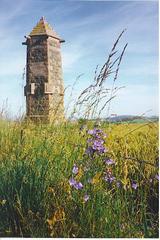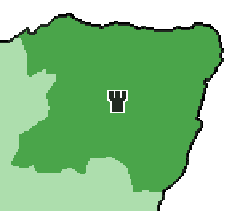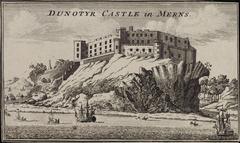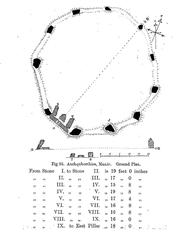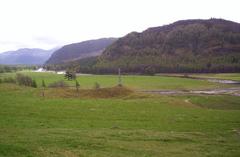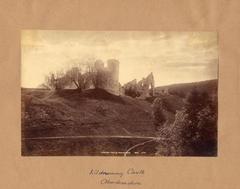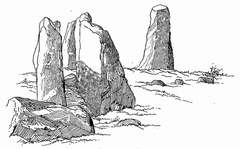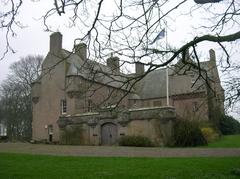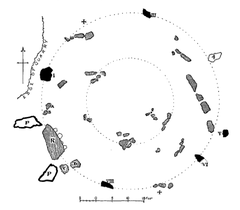
Dunnicaer Hillfort Visiting Hours, Tickets, and Travel Guide – Ballater, United Kingdom
Date: 04/07/2025
Introduction
Perched dramatically on a rugged sea stack off the Aberdeenshire coast near Ballater, Dunnicaer Hillfort is among Scotland’s oldest and most enigmatic Pictish fortifications. Securely dated between the late 2nd and late 4th centuries AD, the site offers unparalleled insight into the early medieval power centers of northern Britain and the mysterious Pictish people (University of Aberdeen; Atlas of Hillforts). The fort’s position atop a sheer rock outcrop highlights its strategic and symbolic importance, reflecting a society preoccupied with defense, status, and control of the coastal landscape.
Dunnicaer gained historical prominence in the 19th century with the discovery of carved Pictish symbol stones—some of the earliest ever found—which have challenged traditional chronologies of Pictish art and identity (Ancient Origins; Wikipedia). Recent archaeological investigations, notably by the University of Aberdeen, have revealed timber-laced stone ramparts, domestic structures, and Roman artefacts, indicating the fort’s high status and extensive trade connections far beyond the Roman frontier (The History Blog; BBC News).
Though direct access to Dunnicaer Hillfort is extremely limited due to its precarious location and ongoing erosion, visitors can enjoy breathtaking views from nearby coastal paths and explore related heritage attractions such as Dunnottar Castle and local museums (Historic Environment Scotland; VisitScotland). This guide presents a detailed overview of the site’s history, archaeological significance, visitor information, travel tips, and nearby attractions to help you make the most of your journey into Scotland’s ancient past.
Contents
- Introduction
- Historical Overview
- Early Occupation and Origins
- Archaeological Discoveries
- Cultural and Historical Significance
- Pictish Symbol Stones
- Roman Connections
- Defensive Role
- Later History and Erosion
- Visitor Information
- Visiting Hours and Tickets
- Accessibility
- Travel Tips
- Nearby Attractions
- Guided Tours and Events
- Preservation and Research
- Frequently Asked Questions (FAQ)
- Conclusion and Recommendations
- References
Historical Overview
Early Occupation and Origins
Dunnicaer Hillfort’s origins trace back to between the late 2nd and late 4th centuries AD, making it the oldest securely dated Pictish hillfort in Scotland (University of Aberdeen; Atlas of Hillforts). The fort occupies a sea stack approximately 20 by 12 meters, surrounded by cliffs rising 30–35 meters above the North Sea. In antiquity, the sea stack was likely larger and possibly connected to the mainland, as suggested by remnants of ramparts leading toward the shore (The History Blog).
The choice of this dramatic and inaccessible site reflects the Picts’ desire for defensibility and the projection of power over the surrounding landscape.
Archaeological Discoveries
Early Symbol Stones
The site entered the historical record in 1832, when local youths scaled the stack and discovered carved stones with Pictish symbols. Some stones were lost to the sea but later recovered and are among the earliest examples of Pictish symbol stones (Wikipedia; Ancient Origins). These unique carvings suggest that the Pictish tradition of symbolic stone carving began earlier than previously believed.
Modern Excavations
Access challenges delayed systematic archaeological work until 2015, when the University of Aberdeen, with mountaineering assistance, conducted detailed excavations (University of Aberdeen; The History Blog). Key discoveries included:
- Timber-framed stone ramparts constructed with imported stone and heavy oak timbers.
- Internal structures such as turf-and-timber buildings and hearths, indicating repeated domestic occupation.
- Artefacts including Roman samian ware, glass, and a lead weight—evidence of long-distance trade and elite status (Wikipedia).
Radiocarbon dating of timbers and hearth charcoal confirmed occupation between the late 2nd and late 4th centuries AD (Atlas of Hillforts). The site was likely abandoned by the early 5th century as focus shifted to the nearby promontory of Dunnottar.
Cultural and Historical Significance
Pictish Symbol Stones
Dunnicaer’s symbol stones—incorporated into the fort’s walls—are crucial to understanding Pictish identity, lineage, and authority (Wikipedia). Their early context challenges accepted chronologies of Pictish art (Atlas of Hillforts).
Roman Connections
The presence of Roman pottery and glass, rare at such a northern site, attests to the Picts’ involvement in long-distance exchange networks and the high status of Dunnicaer’s inhabitants (The History Blog).
Defensive Role
The sea stack’s isolation and sheer cliffs made Dunnicaer nearly impregnable, accessible only by climbing or, perhaps, temporary bridges. At high tide, the stack is entirely cut off, enhancing its natural defenses (Ancient Origins).
Later History and Erosion
Coastal erosion has dramatically reduced the size of Dunnicaer, with large portions of the original settlement lost to the sea. Archaeological evidence shows that domestic structures near the cliff edge have collapsed as the rock face receded (University of Aberdeen). This ongoing process underscores the urgency of archaeological documentation and the vulnerability of Scotland’s coastal heritage.
Visitor Information
Visiting Hours and Tickets
Dunnicaer Hillfort is not a conventional tourist site. There is no visitor center, ticketing, or formal opening hours. The site itself is inaccessible without professional climbing expertise due to safety and conservation concerns. Access is free, but public visits are strongly discouraged.
Instead, visitors can admire Dunnicaer from the coastal path between Stonehaven and Dunnottar Castle, which is open year-round and free to access (VisitScotland). For up-to-date information on special events or guided walks, consult local visitor centers.
Accessibility
Due to its sea stack location, Dunnicaer is not accessible to the public or to those with mobility challenges. The surrounding coastal path is moderately level and suitable for most walkers, with benches and viewpoints available. For accessible alternatives, consider the grounds of Dunnottar Castle or Stonehaven harbor.
Travel Tips
- Getting There: From Ballater, drive east via the A93 and A92 to Stonehaven (about 1 hour 15 minutes). Public transport links are available from Aberdeen to Stonehaven.
- Parking: Available at Stonehaven town center or Dunnottar Castle.
- Viewing: The best views are from the path north of Dunnottar Castle. Bring binoculars or a camera with a zoom lens.
- Safety: Do not attempt to climb the sea stack. Stay on marked trails, supervise children and pets, and check tide times before visiting.
Nearby Attractions
- Dunnottar Castle: An iconic medieval fortress open to visitors (Dunnottar Castle Official Site).
- Stonehaven: Picturesque harbor town with shops, restaurants, and annual festivals.
- Fowlsheugh Nature Reserve: RSPB-managed cliffs with seabird colonies (RSPB Fowlsheugh).
- Ballater: Explore royal heritage, the restored railway station, and outdoor activities in the Cairngorms (VisitorUK).
Guided Tours and Events
No regular tours to Dunnicaer are available due to its inaccessibility. However, the University of Aberdeen and local heritage organizations occasionally offer talks, exhibitions, and digital resources related to the site.
Preservation and Research
Dunnicaer’s ongoing erosion makes continued research urgent. Recent excavations required mountaineering skills to access the summit safely, and digital reconstructions now help visualize the lost fort structures (University of Aberdeen). Responsible tourism and public awareness are vital to preserving Scotland’s fragile coastal heritage.
Frequently Asked Questions (FAQ)
Q: Can I visit Dunnicaer Hillfort in person?
A: No. The sea stack is inaccessible and dangerous; observe from coastal paths.
Q: Are there guided tours to the site?
A: No regular tours to Dunnicaer, but talks and exhibitions are offered by local museums and the University of Aberdeen.
Q: What’s the best time to visit for views?
A: Late spring to early autumn, during daylight hours and low tide, offers the best conditions.
Q: Are there entrance fees?
A: No fees to view from the coast. Dunnottar Castle and other attractions may charge admission.
Q: Is the site accessible to people with disabilities?
A: No, but alternative attractions nearby offer accessible facilities.
Conclusion and Recommendations
Dunnicaer Hillfort is a unique window into Scotland’s Pictish past, set against one of the country’s most dramatic coastal landscapes. While direct access to the site is limited, the surrounding area offers rich opportunities for historical exploration, nature walks, and cultural discovery. Enhance your visit by:
- Downloading the Audiala app for guided audio tours and interactive maps.
- Exploring related sites such as Dunnottar Castle, Stonehaven, and Ballater.
- Checking local resources for events and up-to-date visitor information.
- Practicing responsible tourism and supporting local businesses.
Embark on your journey into Aberdeenshire’s ancient heritage and experience the enduring legacy of the Pictish people.
References
- University of Aberdeen
- Atlas of Hillforts
- Historic Environment Scotland
- Ancient Origins
- BBC News
- VisitorUK
- Wikipedia
- The History Blog
- National Museums Scotland
- VisitScotland
- Scottish Outdoor Access Code
- Dunnottar Castle Official Site
- RSPB Fowlsheugh
- Mapcarta


